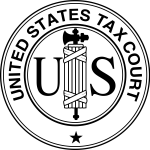 On December 16, 2014, the Fourth Circuit Court of Appeals affirmed the U.S. Tax Court’s ruling in Belk v. Commissioner, 140 T.C. No. 1 (2013). We previously discussed the Tax Court’s decision here.
On December 16, 2014, the Fourth Circuit Court of Appeals affirmed the U.S. Tax Court’s ruling in Belk v. Commissioner, 140 T.C. No. 1 (2013). We previously discussed the Tax Court’s decision here.
In Belk, the taxpayers donated a conservation easement over a 184 acre golf course and claimed a $10.5 million deduction on their 2004 tax return. The conservation easement agreement executed by the parties included a provision which allowed the taxpayers to substitute the property subject to the easement with “an area of land owned by Owner which is contiguous to the Conservation Area for an equal or lesser area of land comprising a portion of the Conservation Area.”
The IRS challenged the validity of the entire donation on the grounds that the real property interest (i.e., the golf course) was not donated in perpetuity because the substitution provision allowed it to be replaced by another property. The IRS argued that the substitution provision violated the requirement that the contribution be an interest in real property that is subject to a perpetual use restriction under IRC §170(h)(2)(C).
The Tax Court held that the donation made by the taxpayers did not constitute a “qualified real property interest” under §170(h)(2)(C) because the conservation easement agreement allowed for substitution of the contributed property. The Tax Court found that the donated property was not subject to a use restriction in perpetuity but in fact was subject to the restriction only so long as the substitution provision in the agreement was not exercised. Accordingly, the charitable donation did not meet the requirements of §170(h) and the deduction was denied in full.
The taxpayers appealed to the Fourth Circuit Court of Appeals to determine whether the easement agreement’s substitution provision prevented the easement from being a donation of “qualified real property interest” under § 170(h)(2)(C). The taxpayers argued that IRC § 170(h)(2)(C) requires a restriction in perpetuity on some real property, not necessarily the real property considered in the original easement agreement. They argued that easement satisfied this requirement because the substitution provision requires that any property removed from the easement must be replaced by property of equal value that is subject to the same use restrictions.
The Fourth Circuit considered the plain language of IRC § 170(h)(2)(C), specifically, that a “qualified real property interest” includes “a restriction (granted in perpetuity) on the use which may be made of the real property.” The Court particularly focused on the use of “the” real property as opposed to “some” or “any” real property.
Relying on two recent taxpayer favorable decisions, Kaufman v. Shulman, 687 F.3d 21 (1st Cir. 2012) and Simmons v. Commissioner, T.C. Memo 2009-208 aff’d. 646 F.3d 6 (D.C. Cir. 2011), the taxpayers argued that courts have approved deductions for conservation easements that put the perpetuity requirement at “far greater risk” than the substitution clause considered here. The Court distinguished this case from Kaufman and Simmons because they considered the requirement that the conservation purpose be protected in perpetuity under IRC § 170(h)(5)(A). Here, IRC § 170(h)(2)(C) regulates the grant of the property itself, not its subsequent enforcement.
The Court also rejected other taxpayer arguments based on state law and a savings clause contained in the easement document that would negate the substitution clause if it would result in the conservation easement failing to qualify under IRC § 170(h). Citing Procter v. Commissioner, 142 F.2d 824 (4th Cir. 1944), the Court held that “when a savings clause provides that a future event alters the tax consequences of a conveyance, the savings clause imposes a condition subsequent and will not be enforced.”
In the end, the Fourth Circuit held that while the conservation purpose of the easement was perpetual, the use restriction on “the” real property is not in perpetuity because the taxpayers could remove land from the defined parcel and replace it with other land. The Court held that allowing the taxpayers to substitute property would enable them to bypass several other requirements of IRC § 170, including IRC § 170(f)(11)(D) requiring the taxpayers to get a qualified appraisal prior to claiming the charitable deduction.
Read the full opinion here: Belk v. Commissioner, No. 13-2161 (4th Cir. 2014)


